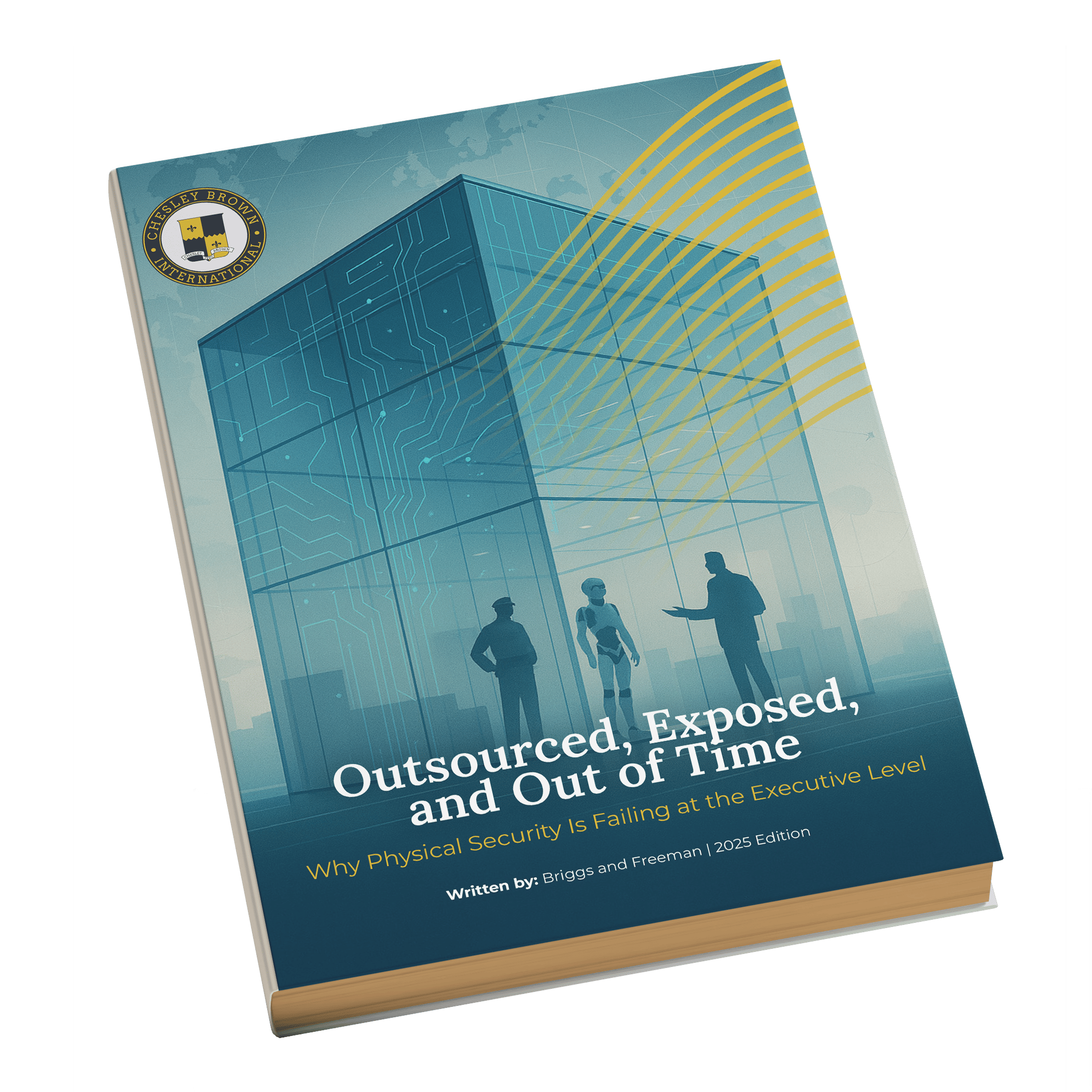Your office building’s mail room could be an unexpectedly easy target for thieves looking to steal everything from banking information to brand-new electronics worth thousands of dollars. “In many properties, the mail room is usually out of the way and unsecured, making it incredibly easy for a criminal to steal something valuable,” said Max Briggs, vice president of central operations for Chesley Brown, the security consulting and management firm.
Your incoming mail could be carrying checks or paperwork with sensitive information, such as financial account numbers. By taking one letter, an enterprising crook could get everything necessary to steal an incoming payment, break into your bank accounts and sell your sensitive data on the dark web. Many companies also ship new smartphones and laptops to their offices — in boxes that are clearly marked with brands like Apple or Dell. Because they’re usually too big for an individual mailbox, it’s not uncommon for them to be left out in the open where anyone can grab them.
“It’s very difficult to track,” Briggs said. “And it’s very difficult to find a perpetrator. Even if you did, it could be hard to levy any kind of prosecution against them.” Fortunately, trained security can do a lot to change the dynamic. In this post, you’ll learn about the conditions that make mail theft possible and the defenses that help reduce that risk.
Why thieves like mailrooms — and why it’s so hard to prevent these crimes
In most large office complexes, postal carriers and delivery services no longer bring the day’s mail to individual offices. Instead, everything is left in a mail room that serves the entire property. Many office buildings locate their mail room in the basement or somewhere else with little foot traffic. In some places, it’s a short walk from the building’s loading docks, giving thieves an easy way to enter and exit the property. Some mail rooms don’t even have a door.
Plus, many mailboxes can be unlocked by an “arrow key,” a type of universal key used by the US Postal Service. The keys are supposed to be under tight control, but they are frequently used in mail theft, the service acknowledges. In fact, when a postal carrier is robbed, the attackers often are trying to steal the carrier’s arrow key.
(To improve security, the Postal Service is gradually rolling out more secure mailboxes with electronic locks.)
Taken together, these all create ideal conditions for a thief. The chances are low that anyone will notice if they break into a mailbox. And it’s easy enough to exit the property with anything they steal. As a result, it takes longer for victims to realize they were hit. The longer it takes to notice something’s missing, the harder it is to investigate the crime, lowering the odds that anyone will be caught or the stolen items will be returned.
“The victims, whether they be an individual or a company, know that there’s very little likelihood of prosecuting anybody and getting their stolen items back, and so they don’t even report it,” Briggs said.
Instead, the victims simply write off the loss as a single unfortunate incident. That might be true for some thieves, but not all. As Briggs explains, most mail-room thieves fall into one of two groups. The first are the opportunists. They might be walking by the mail room and notice an unattended package, so they take it.
The second group consists of individuals or even entire rings of people who systematically target mail rooms in not just one, but multiple office buildings. They usually have some knowledge of the buildings, so they can quickly enter and exit. Sometimes a getaway driver is waiting in the parking lot to speed them away after they commit the crime.
“They may be former employees, former tenants or even current tenants,” Briggs said.
Because they make plans and minimize their risk of getting caught, the organized crooks can do exponentially greater damage. Plus, catching them can be almost impossible. The best outcome might be simply chasing the thieves out of the neighborhood and into a different part of the city.
Potential solutions to mail room theft and fraud
Unfortunately, there’s no one-size-fits-all solution for preventing theft from the mail room. But property management can reduce the risk by implementing layers of security to help deter bad actors. For example, some office properties try to limit access to the mail room by installing locks or access controls and distributing keys and badges to the individual tenants. Unfortunately, it’s not a perfect solution on its own because so many people have a way to get into the room.
“A lot of these mail rooms are still just open access,” Briggs said. “If the room even has a door, it stays unlocked for the convenience of the customers.”
Some buildings try to reduce theft by instituting a policy requiring tenants to pick up their packages within a day of delivery. Most delivery services also deliver alerts via text message or email when they drop off a package. Tenants can monitor those messages and immediately retrieve new packages from the mail room, reducing thieves’ opportunities to steal the packages. Some properties are careful to never leave a garbage can in the mail room. Otherwise, tenants will begin sorting their mail as soon as they open their mailboxes and throw away unwanted letters. Unfortunately, some of those discarded pieces contain sensitive information, and it’s simple for thieves to grab them from the garbage.
Installing cameras in the mail room is a good idea, though property managers should adjust their expectations. In most cases, simply catching a thief on camera isn’t enough to catch the thief.
“In reality, most criminals don’t care about cameras,” Briggs said. “Either they don’t notice them, or they don’t care if they’re on camera.”
That doesn’t mean that cameras are useless. In fact, cameras were essential to a recent mail theft scheme that Chesley Brown helped stop. (It isn’t always a thief that’s responsible for a missing package. Sometimes it’s another tenant who accidentally picked up your items with their mail. A security camera can help clear up things.)
“We always advise clients to put a camera on the mail rooms,” Briggs said. “You’d be amazed how many places don’t have cameras on their mail rooms.”
‘Criminals aren’t known to be the smartest people in the world’
Recently, one of Chesley Brown’s client properties in Atlanta was being targeted by a mail thief, Briggs said. Fortunately, that office building’s mail room had a security camera. The footage wasn’t useful for identifying the thief, but it did indicate when the thefts occurred. And the property’s security director realized something: If this was happening to them, there was a good chance that nearby buildings were being hit, too.
“So he took the initiative to contact our teams in other properties,” Briggs said. “He also reached out to other buildings’ security teams.”
The security director was right. Many of those office buildings had experienced thefts. Using data on those crimes, he found a pattern of the days and times when the thefts were most likely to occur.
“Criminals aren’t known to be the smartest people in the world, despite what people may think,” Briggs said. “And very often they become creatures of habit. They keep coming back because they know when the mail is being delivered.”
This time, though, security was waiting. They set up observation points and pursued the thief, who narrowly got away. They just missed getting the getaway car’s license plate, Briggs said. The good news is the extra security scared the thief away from that group of buildings. And thanks to the efforts of the security team and information provided to postal inspectors, an arrest was eventually made. That will hopefully lead to further arrests and an end to this cycle of crime, Briggs said. In fact, mail theft had been an almost daily problem, but it hasn’t recurred for several weeks.
“All of this took a concerted effort,” Briggs said. “You just keep piecing things together and looking for trends. And the next thing you know, you might have a shot at getting one of these guys.”
The bottom line on mail theft and fraud
Mail theft can be difficult to address because it happens so quietly. As a result, it could take days or even weeks before victims notice their packages and letters were stolen. Fortunately, building security can reduce the risk by adopting layers of defenses, including security cameras, access controls and other safeguards. That could be enough to discourage thieves from targeting your property. In some cases, your cameras and other protocols could even give security the knowledge it needs to catch the guilty parties.
If you need help securing your office building, Chesley Brown has decades of experience providing strategy and staffing to commercial properties in cities across the country. The firm’s team of experts can provide tailored advice and plans for essentially every challenge, including mail room thefts.
Sign up!
For industry-leading guides and analysis sign up for our blog below.
Latest News
5 Tips for Creating Better Crisis Management Plans
Like a lot of people, you may be wondering what comes next for your business or organization following the Coronavirus outbreak (or any other crisis for that matter). Well, you’ve come to the right place.…
FREE DOWNLOAD Securing a New World: Security, COVID-19, and Boots on the Ground
There can be no argument that technology has infiltrated virtually every aspect of daily life for the vast majority of people and businesses across the world. Technology is woven into the social fabric of everyday life. It monitors our movements, our interests, our purchasing power, our locations, habits, our risk to insurers, our body chemistry, and health. Our images are captured overtly and unknowingly 1000’s of times daily. It captures the best of us in amazing acts of heroism and human interaction, and it captures the worst of us; for accountability and delivery of justice.
When it Comes to Corporate Espionage, Harvard’s Dr. Lieber is Just the Tip of the Iceberg
When it Comes to Espionage Harvard’s Dr. Lieber is Just the Tip of the Iceberg From Chesley Brown International By Dell Spry Renowned Harvard Professor Arrested for Lying About Connection to China. Feb 5th, 2020…
Chesley Brown Launches Initiative to Fight Human Trafficking
Chesley Brown Launches New Initiative to Fight Human Trafficking From The Chesley Brown Group Risk Management [dpArticleShare] Chesley Brown, the security management experts, announced today a new training initiative to provide support to victims, families,…
Spotlight: Bryan Taylor Promoted to Vice President
Chesley Brown Spotlight: Bryan Taylor Promoted to Associate Vice President From Chesley Brown International Employee Spotlight [dpArticleShare] Chesley Brown is excited to introduce our newest Associate Vice President Bryan Taylor. Bryan has been with Chesley…







